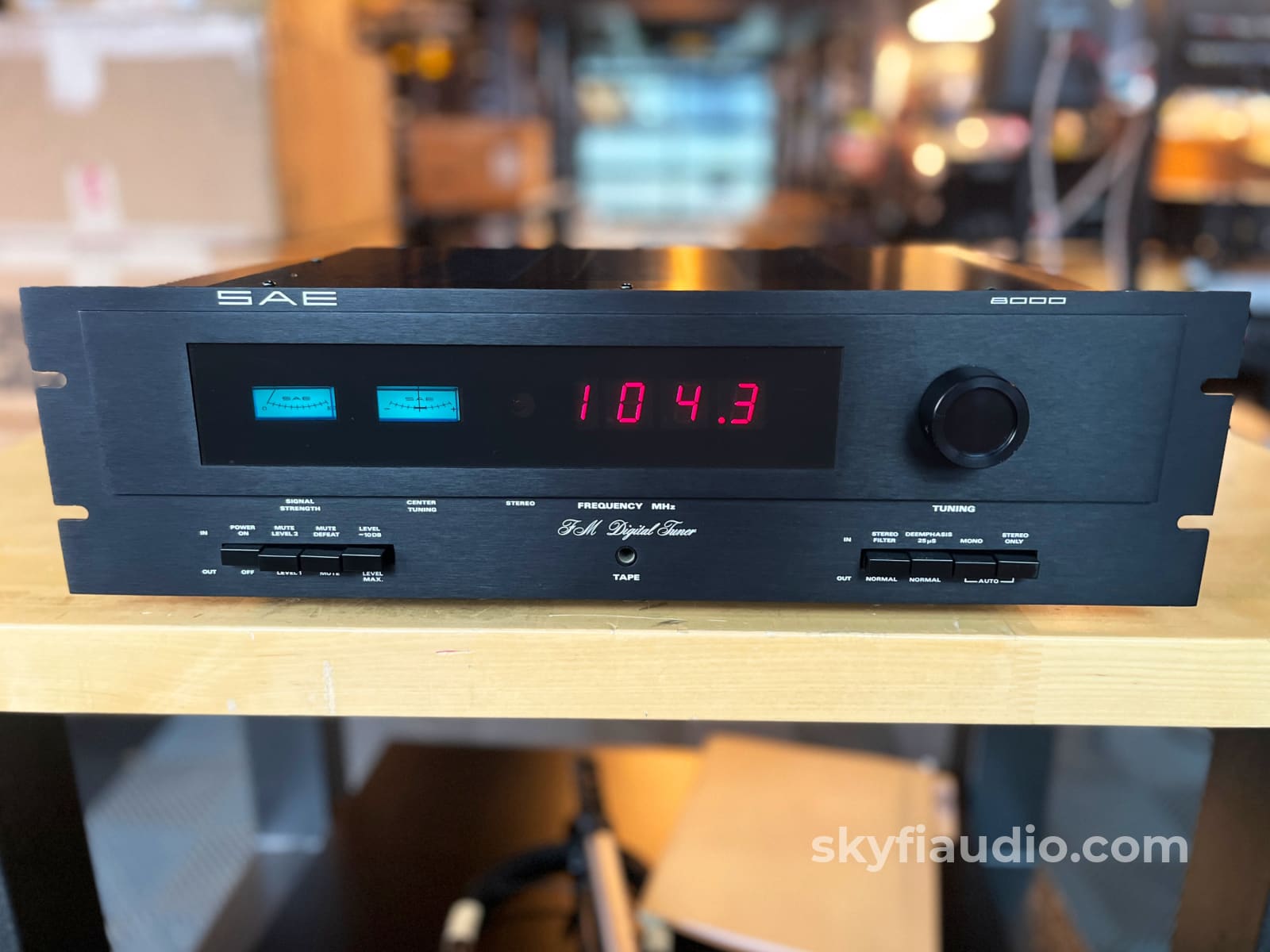
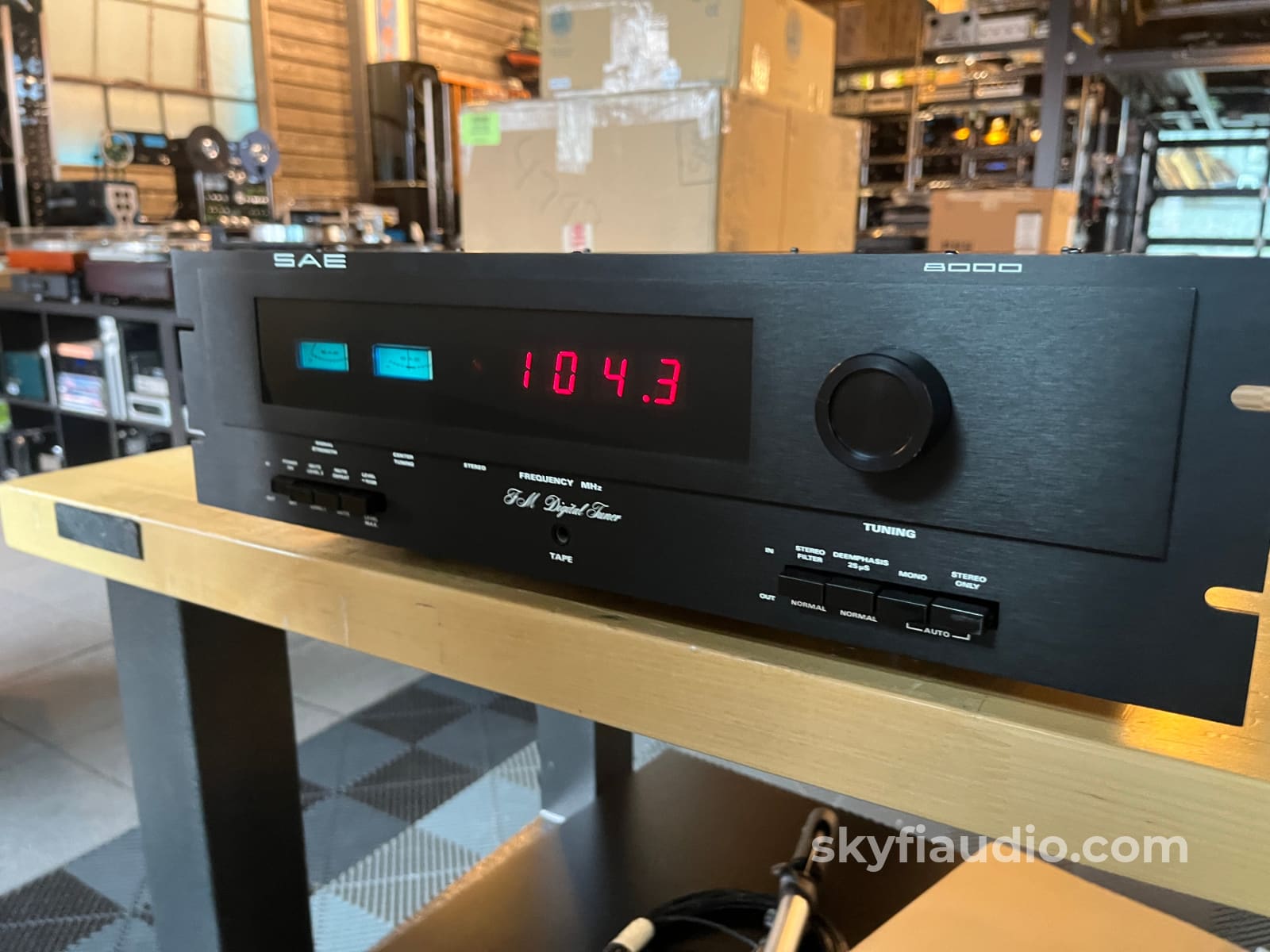
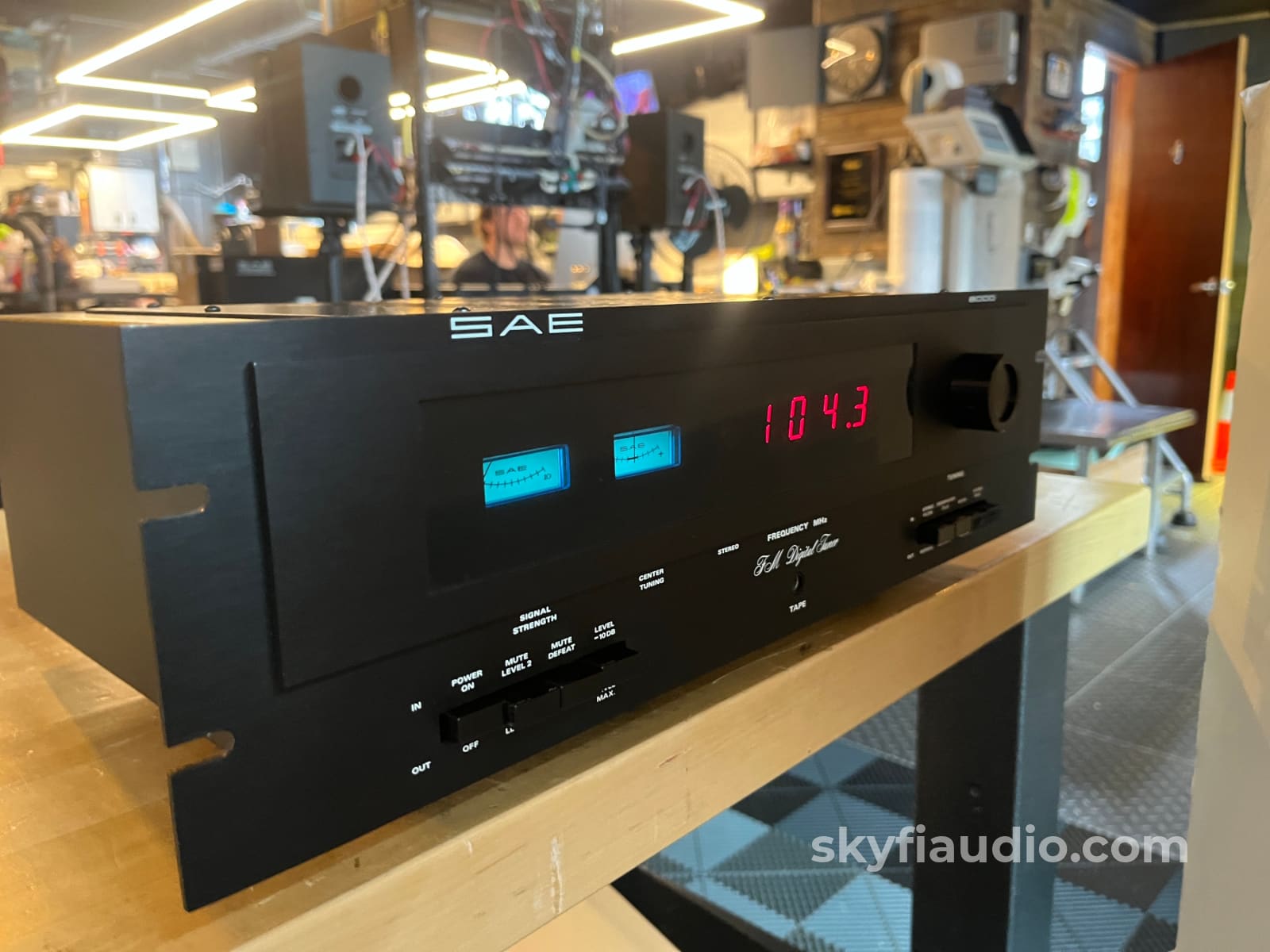
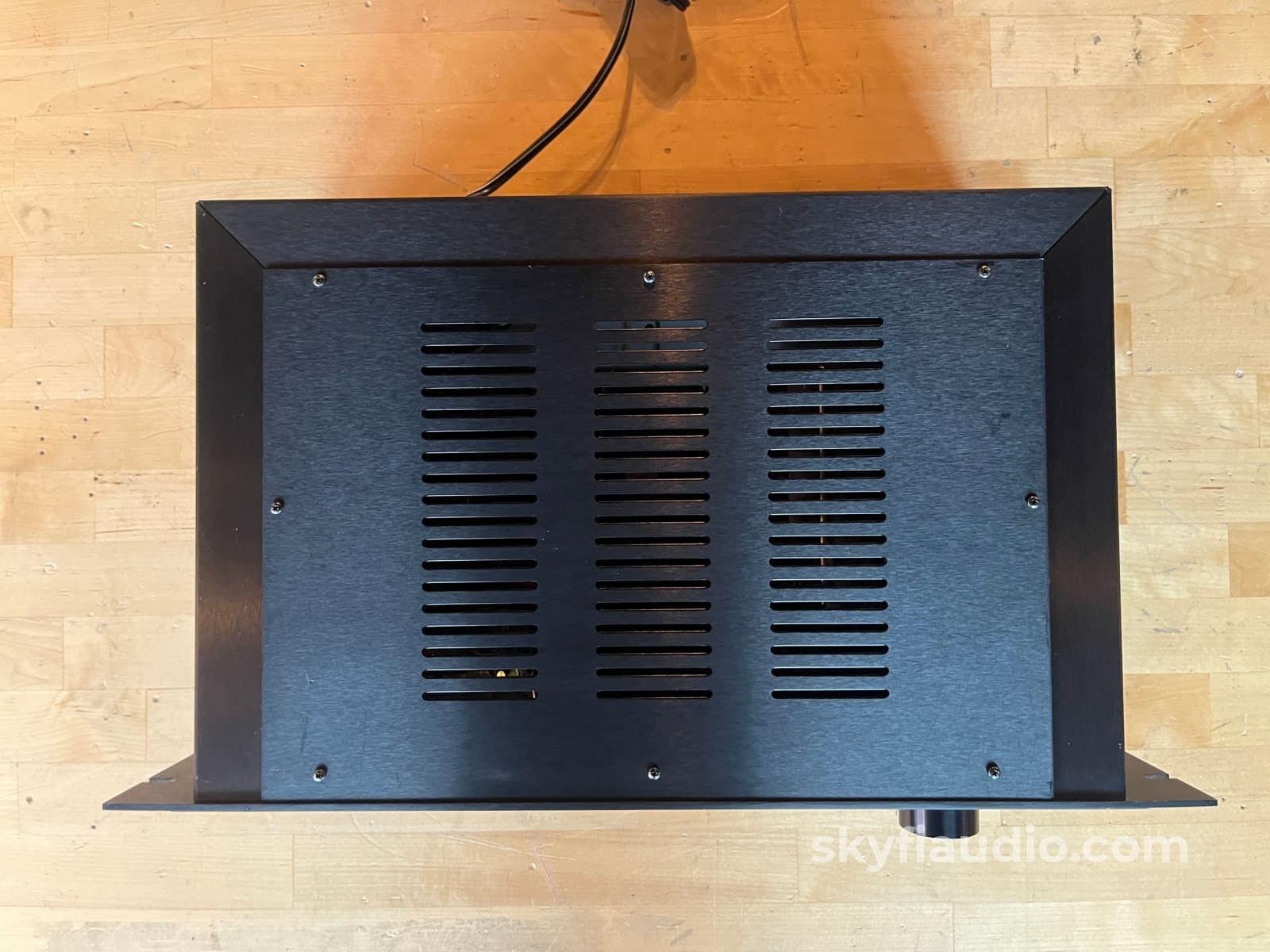
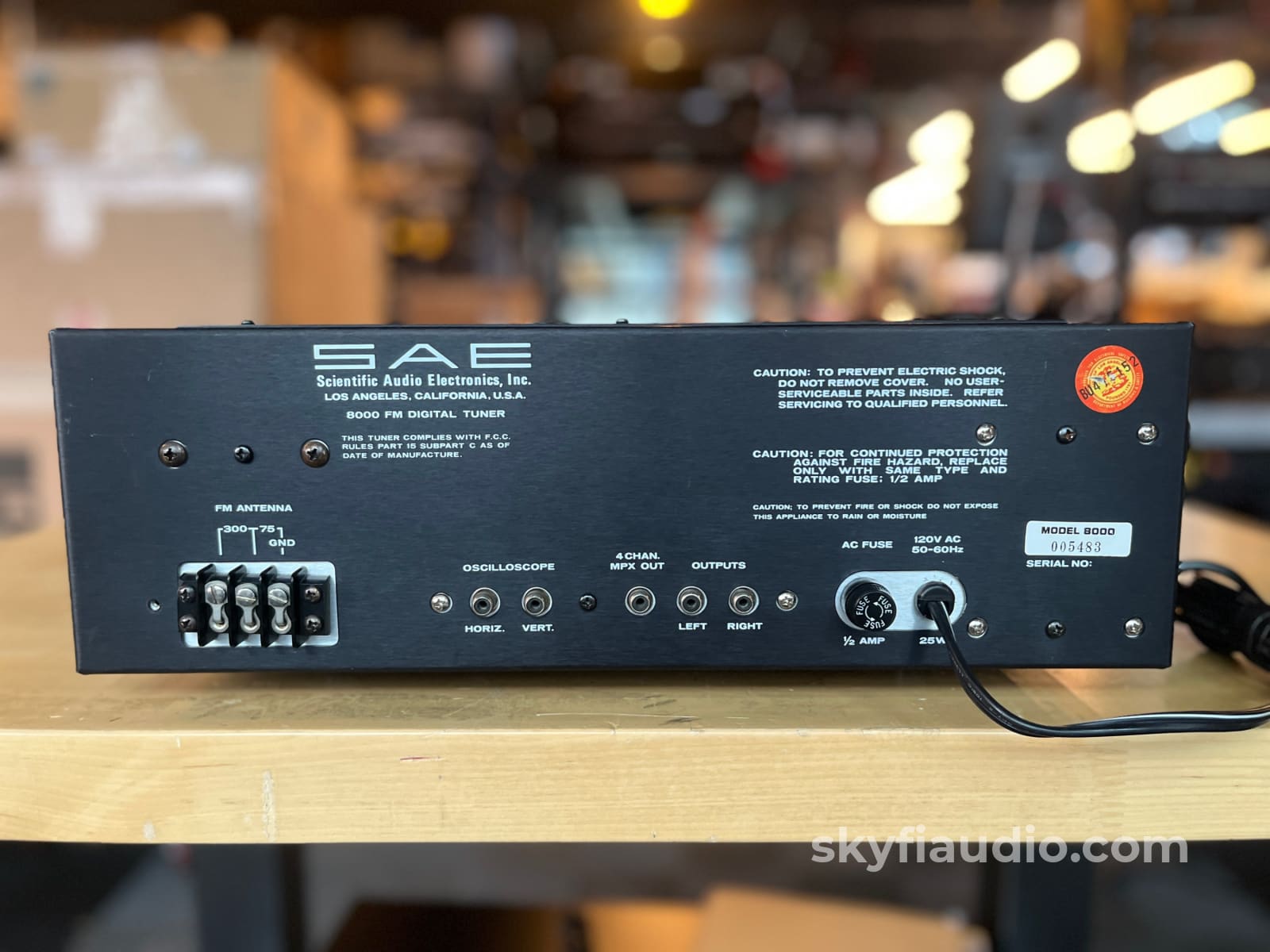
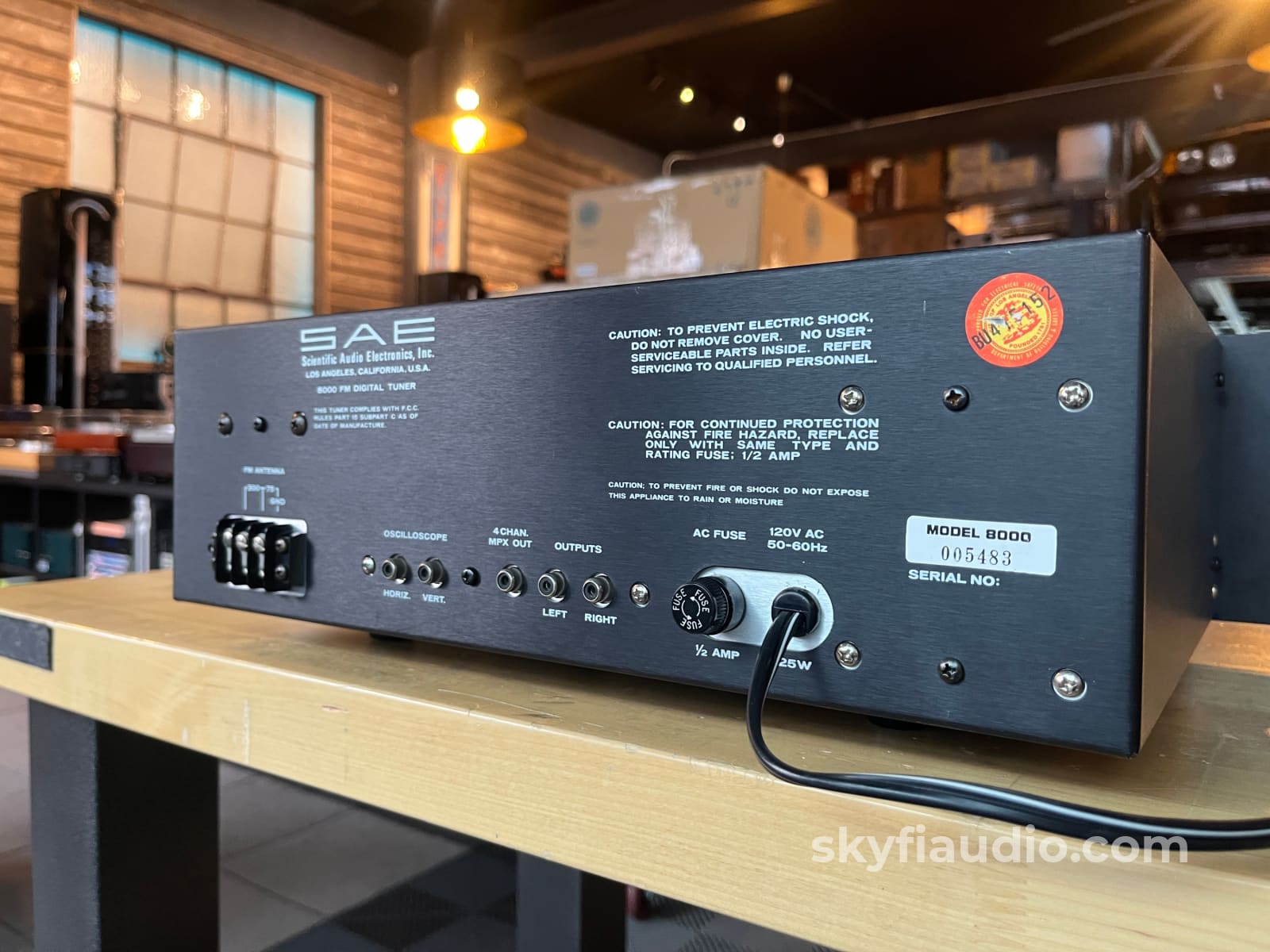
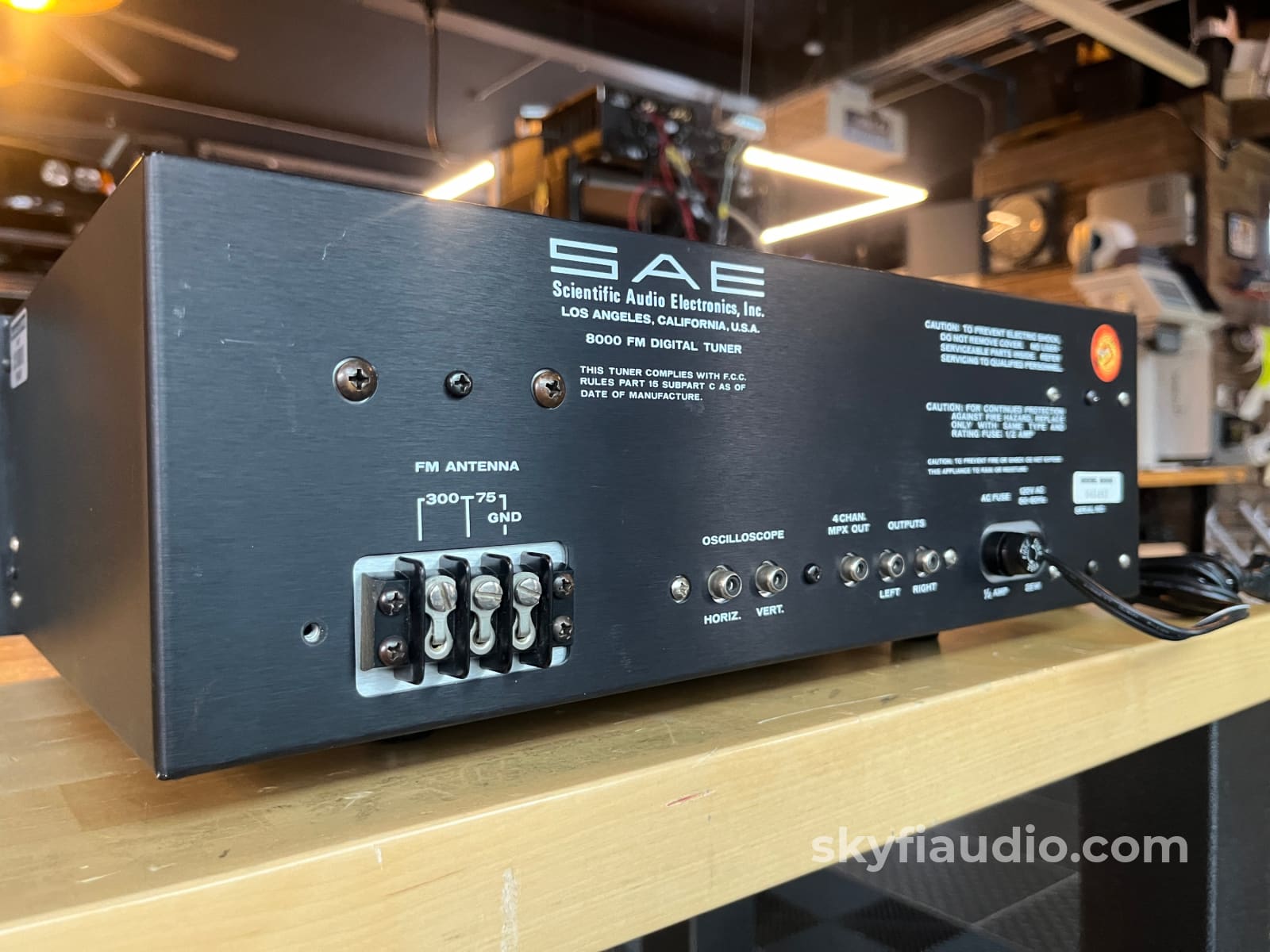
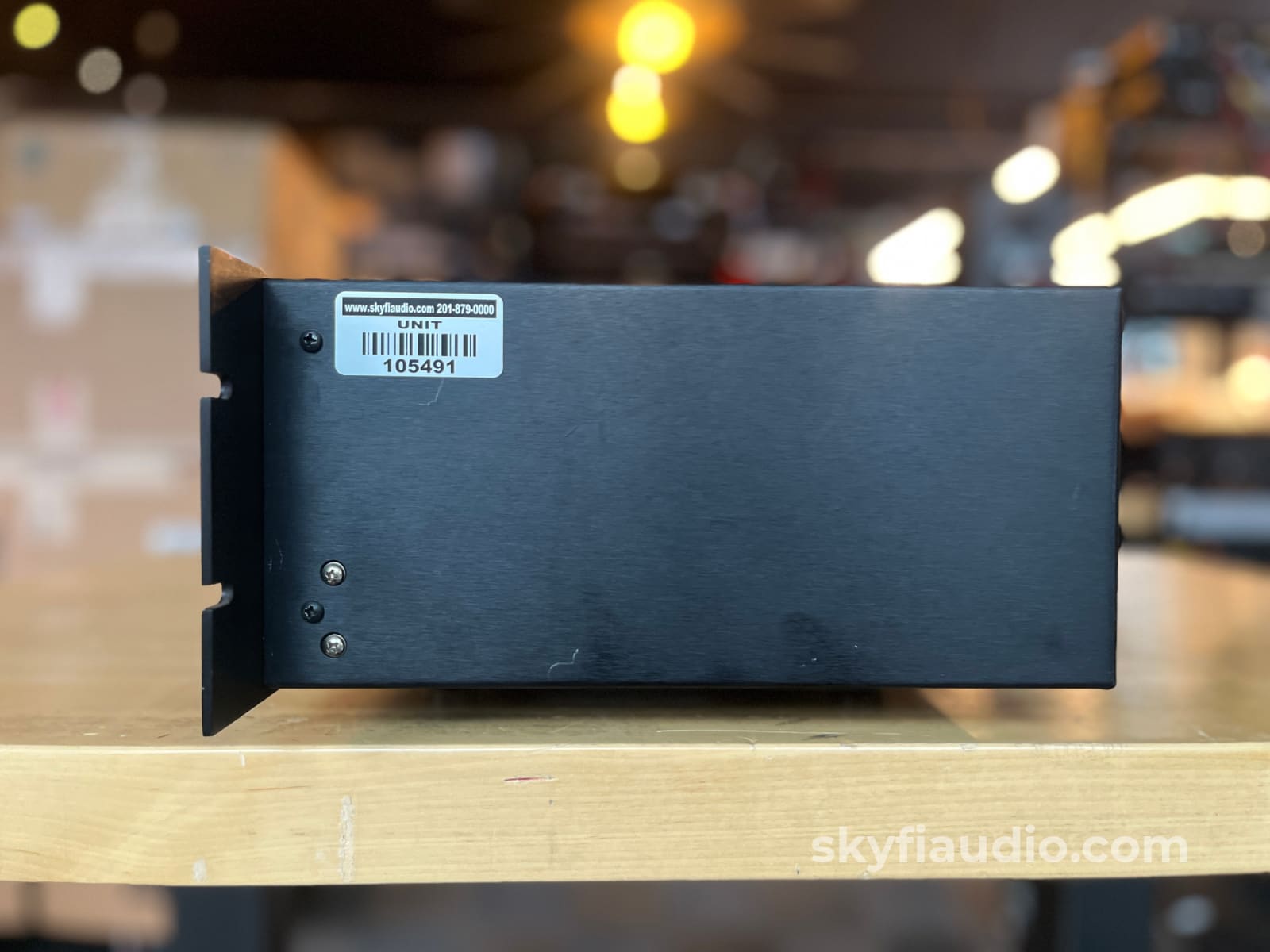
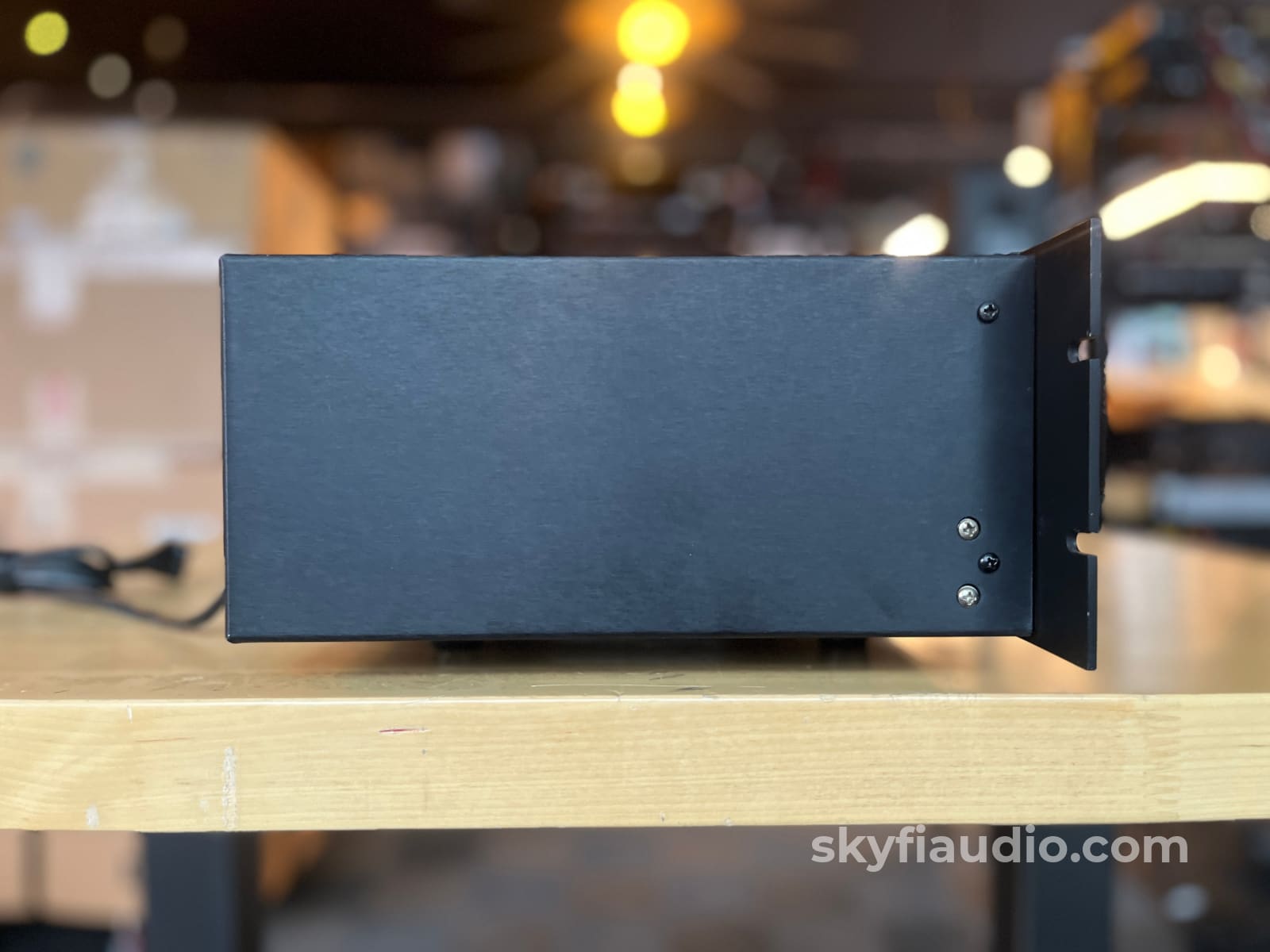
SAE 8000 FM Tuner
Free Shipping on Most Electronics - Excludes Speakers and Items Requiring Freight - Contiguous U.S. Only
Pickup currently unavailable at SkyFi 479

SAE 8000 FM Tuner
SkyFi 479
479 South Broad Street
Glen Rock NJ 07452
United States
General:
Cool looking and great sounding retro tuner from SAE.
Featuring a large and bright LED numeric station display that's easy to read from across the room. Also features cool blue meters for perfectly tuning in your favorite station.
Form factor is an industrial rack mount, the perfect look for this era.
Thoroughly tested in our lab and working perfectly.
More from SAE:
The SAE 8000 FM tuner offers low distortion and steep quieting.
Utilizing dual MOS FET circuitry, linear phase IF filters and phase lock loop multiplex section, it provides the cleanest, crispest, most accurate reception of any signal available from an FM station.
SkyFi Cosmetic Notes:
This tuner presents very well overall but does have a few minor blemishes along the top edge of the faceplate and some marks on the top panels.
SkyFi Technical Notes:
This tuner performed very well in our bench testing on all the key parameters such as sensitivity, stereo separation, dial tracking, etc.
Brand Background:
Scientific Audio Electronics (SAE) was officially commenced in 1968 with a Partnership Agreement between Ted Winchester, Morris Kessler and Beth Winchester. They needed a logo, so Ted took out some Bishop Graphics PC board drafting tape and designed the stylized "S" and "E" symmetrical with the "A", SAE was born.
The Mark Two was no beauty, but it didn't have the "transistor sound" like other amplifiers of the day. Still it was difficult to sell an "orphan" power amp to the audio emporiums of the day. Their customers wanted the Marantz and Macintosh full-line with front panels/rack cases look. That changed with a review in Stereophile. Gordon Holt was reluctant at first to review the "orphan" amplifier that was not available nationally. On the telephone, in effect he said, "Well you (Ted) have made me curious and either you and your friends all have tin ears if you and they think it's the solid-state equivalent of the Marantz Nine or you've made the only solid-state amp worth buying. Gordon's most generous praise of the Mark Two in Stereophile most likely started the SAE legend.
In the early 70's, Ted was designing and manufacturing graphic equalizers separately under Linear Transducer Designs (LTD) that SAE marketed through the mid 70's. All LTD manufactured SAE equalizers and SAE preamp-equalizers are identifiable by the "Copyright LTD 19XX" on every circuit board except the Mark 1B.
Along the way, Morris was joined by the likes of the great Ed Miller and James Bongiorno, to name just a couple. Morris sold SAE, Inc. in 1988 to a company that in turn sold it to DAC. They were trying to reach the masses and had the SAE TWO line built overseas. It was the beginning of the end for the SAE banner.
James Bongiorno started GAS (Great American Sound) which also built some classic amps, like the Ampzilla & Grandson. Bongiorno sold GAS and started a third company, Sumo, and designed still more classic amps, and a tuner called Charlie the Tuner. Then in June of 1994 Morris Kessler and Mike Pontelle joined under the banner of Amplifier Technologies, Inc. ( ATI ) .
For almost two decades, SAE made some of the best known home audio amplifiers. In the early Seventies, if one wanted the best in solid-state amplification, SAE came to mind. Known then internationally as purveyors of open and musical products, SAE lingers in the minds of audiophiles old enough to remember as a company that really produced. These amps were so popular, they took Japan by storm way before single-ended tube amps became retro-cool in the land of the rising Sun.
Ownership:
Second Owner
Connections:
RCA audio outputs, RCA outputs for an oscilloscope Connections for 75 and 300 ohm antennas.
General Sound:
Accurate to the recording
Cosmetic Condition:
8/10 = Very Good. Excellent front faceplate, one minor flaw on chassis side or top. See our detailed rating description here.
Working Condition:
Working perfectly and tested in our lab.
Included:
Exactly as pictured and described above.
Packing:
Will be packed using our highly developed in-house process and custom packing materials.Specs:
Type: Mono/Stereo Tuner
Tuning Bands: FM
Tuning Scale: Digital
Sensitivity: 1.6uV (FM)
Signal to Noise Ratio: 70dB (FM)
Distortion: 0.2% (FM)
Selectivity: 120dB (FM)
Frequency response: 20Hz to 15kHz (FM)
Dimensions:
19" x 5.25" x 11"
Weight:
16 lbs.
Approximate Age:
1978
Link to Manual:
Click Here
Recommended Cables:
Kimber Kable - RCA Interconnects - Better
Testing Process:
We start with a visual inspection of all internal components to make sure that there are no signs of heat stress or damage. Capacitors are checked for telltale signs of predictive failure including bulging, shrunken wrappers, or physical leakage. We also inspect the PCBs for discoloration from resistors or transistors that may have been running hot.
On vintage units we often spot check select capacitors for value and ESR. Vintage analog tuners also have moving parts related to the tuning gang and dial string. These parts are inspected for smooth operation.
If the unit passes visual inspection it is bench tested for a handful of key performance parameters using a Sencore SG80 AM/FM Stereo Analyzer. The SG80 allows us to “simulate” an ideal radio station using precision test signals instead of music. This device in conjunction with an oscilloscope allows us to properly evaluate the following parameters:
1) AM Reception (Where Applicable)
2) FM Mono Reception & Tuning Meter Function
3) FM MPX Reception (Stereo)
4) Dial Tracking: How accurately the tuner dial or display indicates the actual frequency of the broadcast being received.
5) Stereo Separation: A properly working stereo tuner will have minimal crosstalk between the left and right channel.
6) Sensitivity & Signal Strength Meter Function: By lowering the output of the SG80 we can simulate weak stations and determine how well the tuner will be able to pull in weak distant stations. This adjustment also helps us verify signal strength meter function.
If the tuner has acceptable performance related to the parameters above we connect the unit for listening tests with a simple dipole antenna. We listen for audio reproduction quality of local stations and evaluate how many stations the tuner can receive while we sweep through the dial.
We are looking to verify that the tuner can decode stereo on strong local broadcasts and pick up a wide variety of local stations at the bottom, middle, and top of the frequency band. At this point we also test convenience features such as muting, filters, built in oscilloscope function, etc.
We finish up with an extended listening test on our long term test rig. We tune in to a strong local station and monitor for drift over a minimum period of 2-3 hours.
Choose options









